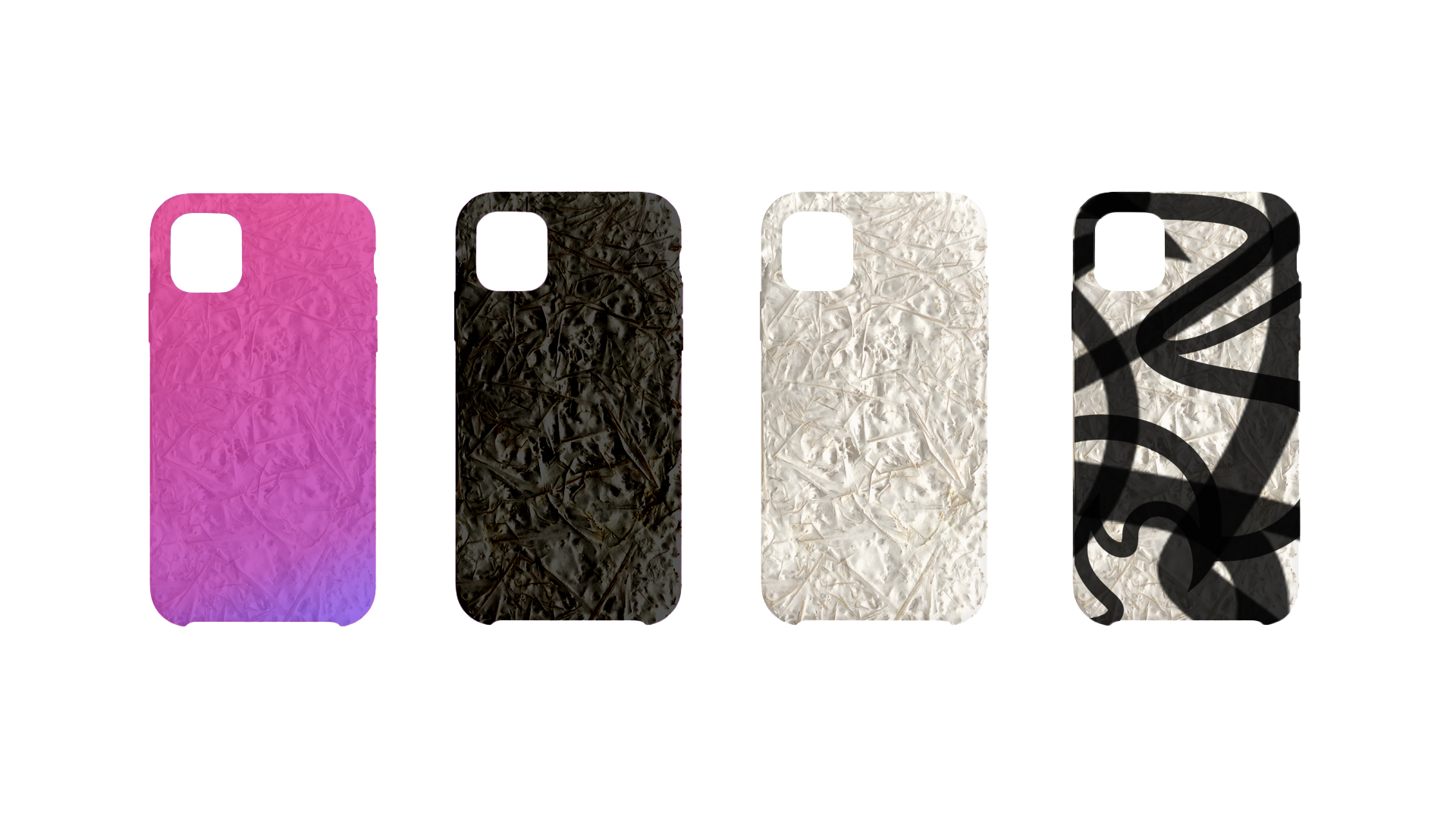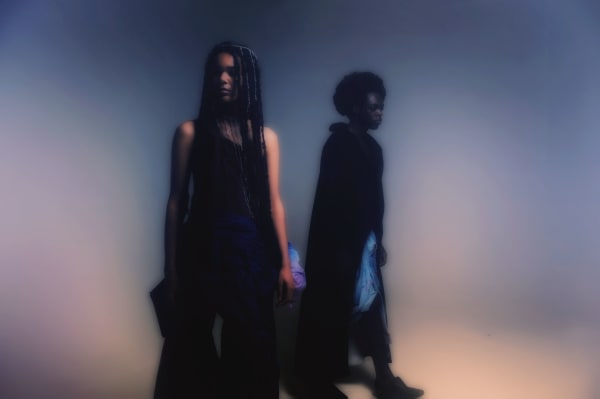Welcome to the near-future designed by MA Material Futures students Rūta Irbīte and Liene Kazaka in response to a brief from Three.
Currently 3.7 million tonnes of plastic waste from electronics is produced each year in Europe alone. Only a third of that is recycled with the majority incinerated or sent to landfill, polluting ground and waterways for centuries to come. Three challenged MA Material Futures students to rethink mobile accessories for a more sustainable future by offering consumers an alternative to plastics. Rūta Irbīte and Liene Kazaka knew immediately what direction they wanted to take:
Mycelium is the body and root system of fungi that forms an invisible network underground connecting every plant. It is sometimes referred to as the Wood Wide Web – “nature's very own 5G” as Irbīte and Kazaka highlighted. It is strong, light, flame and water repellent, and can be grown locally on waste and processed in different ways for various properties and finishes.
Mycelium is grown on a substrate, in this case coffee grounds, hay and sawdust. The final results in terms of texture, durability and aesthetics depends a lot on the waste material on which the mycelium is grown. The focus for the duo is that it can be grown at home, giving consumers the chance to create their own phone accessories, and when no longer useful, it can be composted becoming fertiliser for houseplants.
Grown by Three
They began their experiments in the Grow Lab at College and when lockdown came set up DIY labs at home. Speaking to each other daily, their investigations ran in parallel as a useful way to test and confirm the results.
With the material already in use for packaging, it won’t be long before mycelium appears in more consumer goods. But there’s also a huge collective shift in mindset required to move us away from traditional methods, extracting finite materials to create perfect, replicable objects towards something more organic, less predictable.
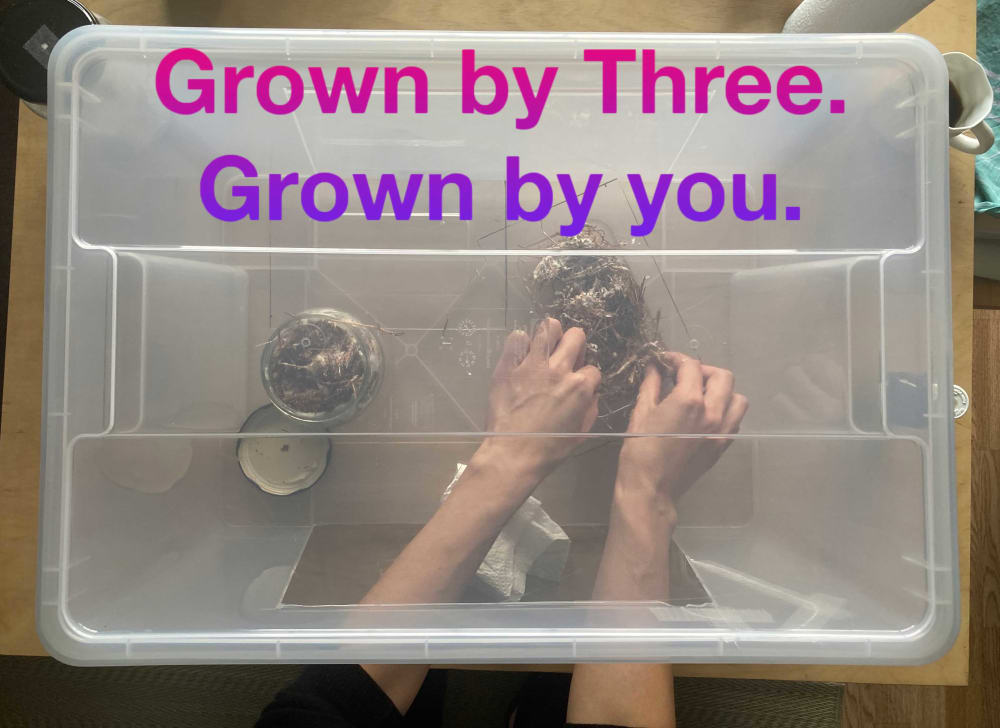
“It’s a totally different type of work which industry isn’t suited to yet,” explains Kazaka, “Yes mycelium is already being used but there’s so much more that we could do with it. It needs a lot of experimentation and new ways of working… If you grow something you have different timescales. It doesn’t appear just like that; you have to wait. And you have to accept some imperfections, which we – as consumers – are not accustomed to. With biomaterials, you will never have the same type of perfection as petroleum-based materials; they are alive, it’s going to be slightly different every time.” “We need to fall in love with that unpredictability,” continues Irbīte. At its heart, their project connects each consumer to the circularity of an object’s life, not simply its use but its production and disposal.
This shift away from extractive and controlled production methods towards something grown and contingent seems simultaneously impossible and undeniable. “To truly enter the consumer market mycelium and other biomaterials need to replace existing production methods which, of course, is problematic,” says Irbite, “These are large scale systemic changes. They are massive changes that many stakeholders are not ready to make. The biomaterials revolution is still in its infancy and we need investment for it become a reality.”
That Three selected Grown by Three as the winner of their MA Material Futures project suggests that the tide might be turning. “We thought we were never going to win with our earthy, mushroom stuff!” says Irbite, “but they fell in love with that idea of growing accessories and it’s so hopeful that they embraced it.”
More projects with Three:
-
The Player and The Fan, The Digital Stadium, BA Fashion and BA Fashion Communication x Three
Re-imagining football’s more open future
Three and Chelsea Football Club challenged students from BA Fashion and BA Fashion Communication to re-imagine football for a more connected, open and democratic age.
-
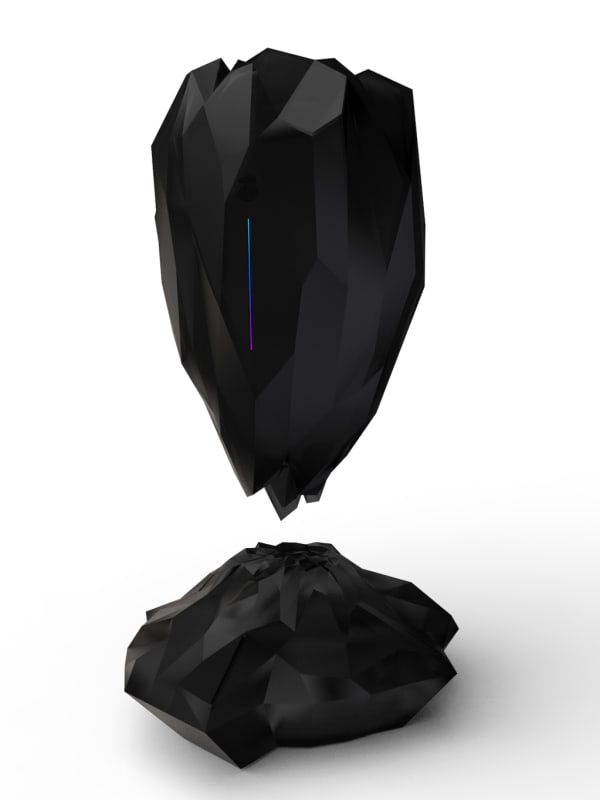
Powerstone, MA Industrial Design x Three
Why the router of the future floats
Three tasked MA Industrial Design students to re-think the router. In the hands of the winning student team, this oft-ignored box is transformed into a levitating gaming crystal
-
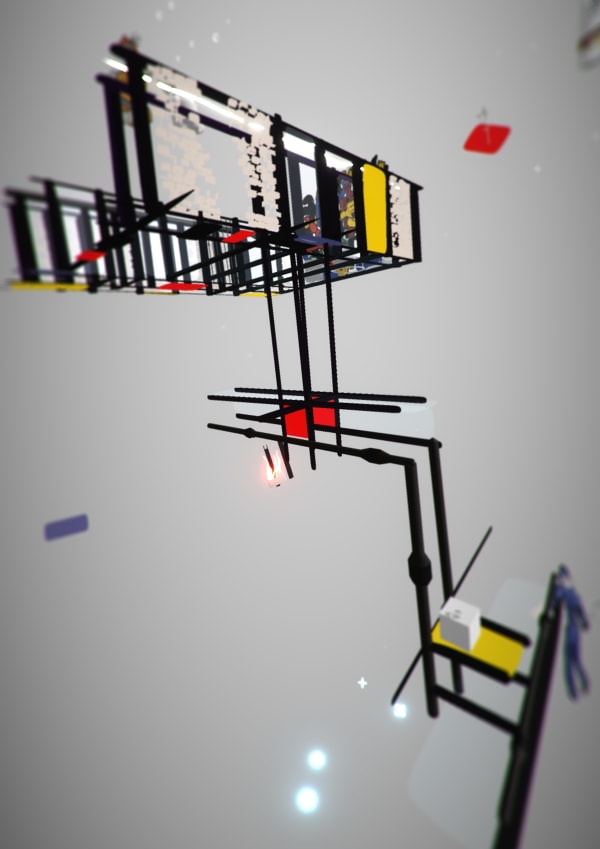
Work by Fine Art graduate Lea Spatium
Innovation and Business
Creating bespoke collaborations to take our partners on a transformative journey with Central Saint Martins
